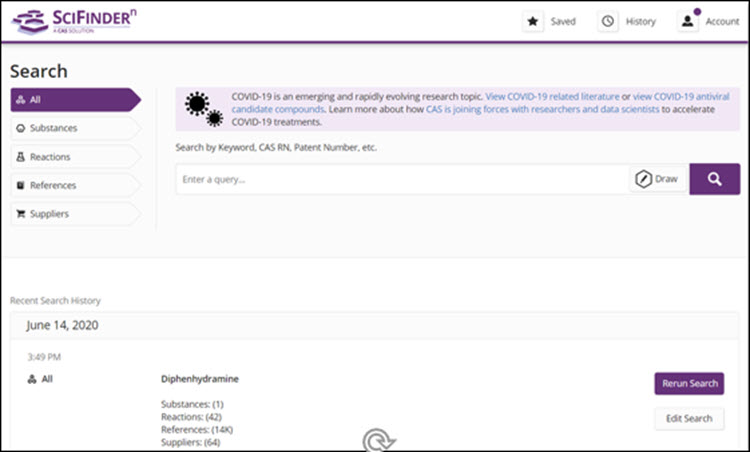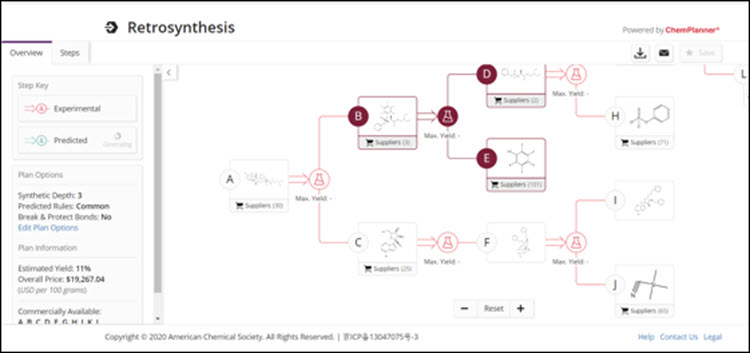SciFindern now available for all UC faculty, staff and students
SciFindern (or SciFinder-n) is the new, streamlined SciFinder interface from CAS (Chemical Abstract Service) that covers the chemical literature, indexing millions of journal articles, patents, substances, and chemical reactions. The current SciFinder is not going away, so UC has access to both versions at this time. Your SciFinder login will work with SciFindern; if you do not have a login, select your campus and follow the links to register for an account. Saved searches and “Keep Me Posted” alerts can be transferred into SciFindern.
Both versions require the personal login for each use, plus VPN and/or proxy to access off campus, whatever your campus offers. VPN/proxy are also required to access the campus registration pages. As with SciFinder, use of SciFindern is restricted to current UC faculty, staff and students. No walk-in access is available.
SciFindern FAQ | SciFindern Quick Start Guide | SciFindern Training Resources
http://uclibs.org/PID/432794 All campuses; on the SciFindern platform
What’s New in SciFindern
- Retrosynthesis Planner – generate a full retrosynthetic analysis of all known synthetic routes for a given molecule; organize into easy to navigate synthetic plans; and access commercial source availability and pricing.
- PatentPak – search 18 million patents within SciFindern, full-text and annotated by substances to quickly see where they appear in the patent.
- ChemDoodle for touch-capable structure drawing for mobile devices.
- MethodsNow – quick access to step-by-step procedures and protocols for running reactions, extracted from the article and patent text.
- “Search All” to search across the substance, reaction, and references databases.
- Combined keyword and structure searching.
- Autosuggesting search terms.
- Relevancy-based sorting of results.
- Reaction search results grouped by scheme (same reactants and products).
- Live History – edit and rerun past searches.
- Additional filter functionality in the results: setting publication date ranges, searching within the filter categories along with frequency and natural order.
- Clearer labeling to connect you to full-text articles, with UC-eLinks now included.
- Citation mapping to quickly see cited and citing articles.
- Improvements in combined search functionality (e.g. two authors, two organizations, author/organization, two substance property data points).
If you have questions about accessing or using SciFindern or SciFinder, please reach out to the key contact for your campus.
UCSD’s Teri Vogel (tmvogel@ucsd.edu) is the Resource Liaison for SciFindern and SciFinder.


